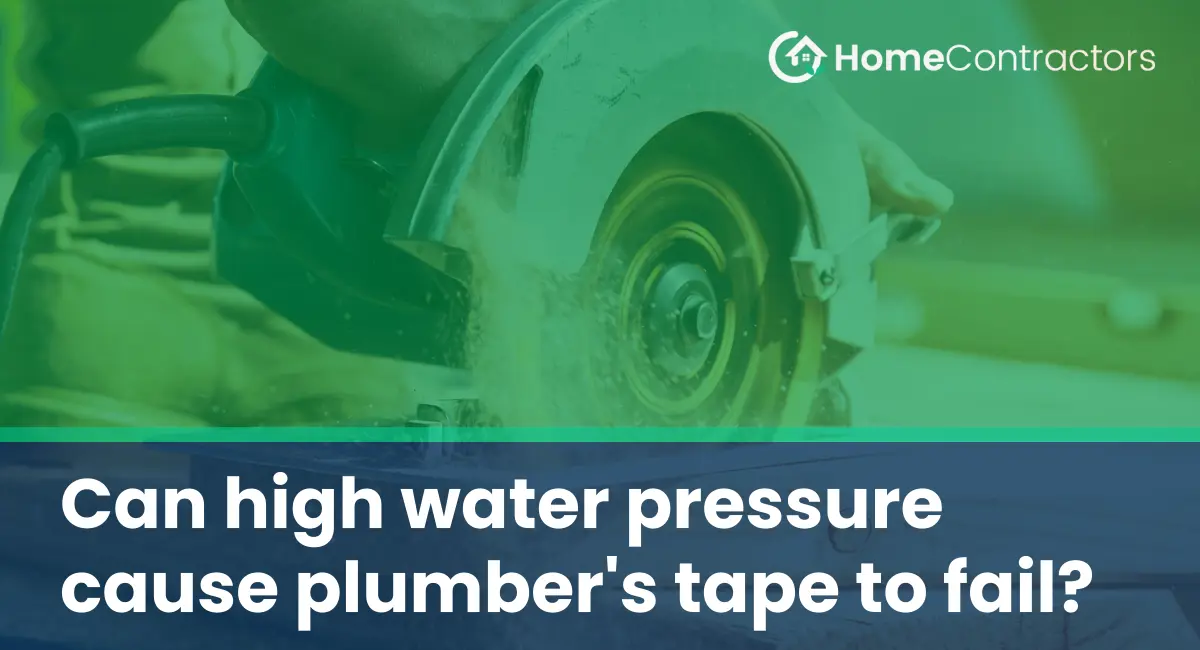Plumber’s tape, also known as Teflon tape or thread seal tape, is a crucial component in plumbing installations. It is commonly used to create a watertight seal between threaded pipe fittings, preventing leaks and ensuring the overall integrity of the plumbing system. However, it is often wondered if high water pressure can cause plumber’s tape to fail. In this article, we will explore this topic and shed light on the potential impact of high water pressure on the effectiveness of plumber’s tape.
Understanding Plumber’s Tape:
Before diving into the effects of high water pressure, it is important to understand the purpose and composition of plumber’s tape. Plumber’s tape is typically made of polytetrafluoroethylene (PTFE), a high-density synthetic material known for its exceptional chemical resistance and low friction properties. It is highly flexible and thin, allowing it to conform tightly to the threads of plumbing fittings and provide a reliable seal.
How Plumber’s Tape Works:
Plumber’s tape works by lubricating the threads and filling any gaps or imperfections. When applied correctly, the tape effectively prevents water or gas from seeping through the fittings. The tape also acts as a barrier against corrosion, which can occur when materials come into prolonged contact with water or other substances. Despite its effectiveness, plumber’s tape must be applied correctly to ensure it fulfills its intended purpose.
The Role of Water Pressure:
Water pressure refers to the force at which water flows through a plumbing system. Normal water pressure typically ranges between 40 to 80 pounds per square inch (psi). When the pressure exceeds this range, it can be considered high water pressure. High water pressure can arise from various factors, such as a malfunctioning pressure regulator or a municipality delivering excessive pressure to the area.
Impact of High Water Pressure on Plumber’s Tape:
While plumber’s tape is designed to withstand normal water pressure, it can struggle to maintain its effectiveness in the face of high water pressure. The increased force exerted on the plumbing system due to the elevated pressure can put strain on the tape and compromise its ability to create a tight seal. The tape may be more prone to being pushed out of place or becoming dislodged, resulting in leaks or incomplete seals.
Common Issues Caused by High Water Pressure:
If high water pressure is present in a plumbing system, several issues can arise, potentially impacting the effectiveness of plumber’s tape. These include:
- Tape Extrusion: High water pressure can cause the plumber’s tape to squeeze out from the threaded connection, leading to leaks and gaps in the seal.
- Tearing or Shredding: Increased water pressure can put excessive strain on the tape, leading to tearing or shredding. This compromises the integrity of the seal and can result in leaks.
- Reduced Lifespan: Continuous exposure to high water pressure can accelerate the wear and tear of plumber’s tape, reducing its overall lifespan and requiring more frequent replacements.
Mitigating the Effects of High Water Pressure:
To ensure plumber’s tape remains effective despite high water pressure, it is important to take certain measures:
- Install a Pressure Regulator: Installing a pressure regulator at the main water supply point can help regulate water pressure and ensure it remains within an acceptable range.
- Choose Quality Plumber’s Tape: Opting for high-quality plumber’s tape can significantly enhance its ability to withstand high water pressure. Look for tapes specifically designed to handle increased pressures.
- Replace Tape Regularly: Regularly inspect plumbing fittings, and if any signs of deterioration or leaks are detected, promptly replace the plumber’s tape. Regular replacement helps maintain an effective seal, even under high water pressure conditions.
While plumber’s tape is an essential component for creating watertight seals in plumbing systems, it may struggle to handle high water pressure. To minimize the risk of tape failure, it is crucial to install a pressure regulator, use high-quality tape, and regularly inspect and replace tape as needed. By taking these precautions, one can mitigate the effects of high water pressure and ensure reliable and leak-free plumbing installations.
